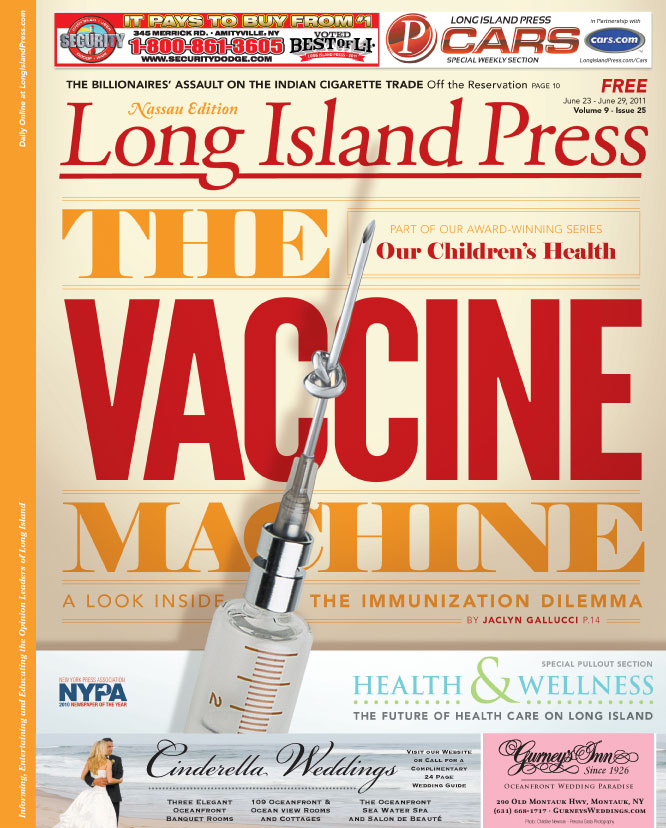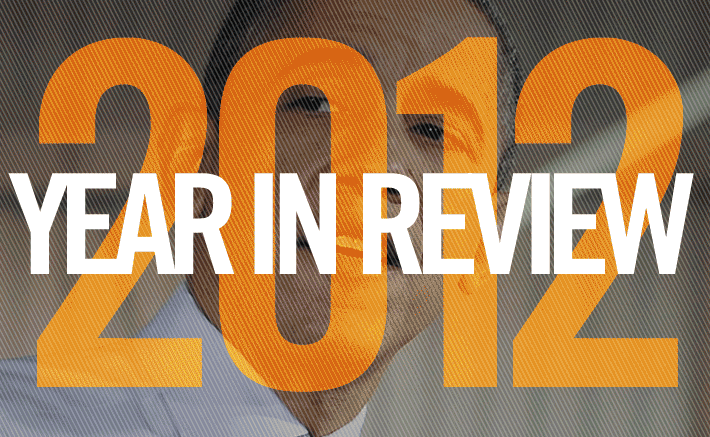
GETTING VACCINATED IN NEW YORK STATE
The current U.S. childhood immunization schedule calls for 28 injections with 11 different vaccines against 15 different diseases by the time a child reaches 2 years of age—the first is the hepatitis B vaccine, normally given within 24 hours of birth. In New York State—unless a parent refuses the shot—newborn babies will receive that one-dose hepatitis B vaccination before they are released from the hospital.
Some ask why babies need to be vaccinated against a potentially deadly disease most prevalent in high-risk groups such as intravenous drug users and sexually promiscuous adults.
“Vaccinating persons engaged in high-risk behaviors, lifestyles or occupations before they become infected generally has not been feasible,” the Advisory Committee on Immunization Practices (ACIP), an adjunct of the CDC, declared in the 1991 mandate. “For example, programs directed at injecting drug users failed to motivate them to receive three doses of the vaccine… In the long term, universal infant vaccination would eliminate the need for vaccinating adolescents and high-risk adults.”
Simply put, it’s easier. It also provides a safety net for children born to mothers with hepatitis B—those who either don’t know they have the disease or whose test results are faulty.
“Routine vaccination at birth prevents these all too common mistakes from becoming tragedies,” states the Section of Epidemiology of Alaska in its public health recommendations.
But why the child of a mother who knows for certain she is hepatitis B negative still needs this vaccine is a question Belkin, whose newborn daughter died hours after she received her second hepatitis B vaccine, asked again, before Congress, more than a decade ago.
“My 5-week-old daughter, Lyla Rose, died within 16 hours of her hepatitis B vaccination, which she received because of the universal vaccination policy this Committee instituted in 1991,” Belkin testified before the ACIP in February 1999. “The NY Medical Examiner observed brain swelling at the autopsy but refused to record that or mention the hepatitis B vaccine Lyla received in the autopsy report. I hold each one of you who participated in the promulgation or perpetuation of that mandated newborn vaccination policy personally responsible for my daughter’s death.”
Lyla Rose Belkin’s official cause of death is listed as Sudden Infant Death Syndrome (SIDS), said her father, simply because there was no other specific reason for her death.
“SIDS is a diagnosis of exclusion…‘It wasn’t this, it wasn’t that, everything has been ruled out and we don’t know what it is,’” he continued. “A swollen brain is not SIDS.”
But a swollen brain is one of the documented reactions to any vaccination in medical literature, and a SIDS ruling for vaccination-related deaths is not uncommon, according to Barbara Loe Fisher, co-founder of the National Vaccine Information Center (NVIC), who interviewed parents of babies who died suddenly after Diphtheria (DPT) vaccinations for her book DPT: A Shot in the Dark.
“The death certificates of many babies, who die shortly after vaccination, list Sudden Infant Death Syndrome or SIDS as the cause of death, which means that no specific symptoms or other reason for death could be found,” she comments in her webpage Barbara Speaks Out. “Most doctors continue to deny that vaccination is a risk factor for SIDS.”
But the Association of American Pediatricians (AAP), which represents 60,000 doctors across the United States, stands by the hepatitis B vaccine, saying negative reactions are a rarity.
“A vaccine, like any medicine, is capable of causing serious problems, such as severe allergic reactions,” states the AAP. “The risk of hepatitis B vaccine causing serious harm, or death, is extremely small. Getting hepatitis B vaccine is much safer than getting hepatitis B disease.”
Although the hepatitis B vaccine is required for children to enter daycare or school, it is not required to be given after birth, unless the mother tests positive for the disease herself. A parent has the right to refuse this shot and delay it for months—or years if they choose.
The same applies to other vaccinations as well. While the CDC has a “recommended schedule” for vaccination, parents are not required to comply with it by law. But the law does require that proof of these immunizations be shown upon entry to daycare or school (both public and private institutions).
According to the CDC-recommended schedule, beginning at 2 months of age, a child should receive three doses of diphtheria toxoid-containing vaccine, three doses of tetanus toxoid-containing vaccine and pertussis vaccine (combined), three doses of polio vaccine, one dose of measles, mumps and rubella vaccine (combined), three doses haemophilus influenza type b vaccine, four doses of pneumococcal conjugate vaccine, and the varicella (chickenpox) vaccine.
 The AAP recommends that kids get combination vaccines, rather than single vaccines, “whenever possible” to help reduce the number of shots a child receives.
The AAP recommends that kids get combination vaccines, rather than single vaccines, “whenever possible” to help reduce the number of shots a child receives.
Because many parents were questioning the safety of the combination vaccines—after the now disgraced UK doctor Andrew Wakefield (more about him later) said this was a toxic cocktail—the vaccines were separated.
Parents had the option of giving the measles, mumps and rubella (MMR) vaccine as three separate shots given weeks apart.
“If you give three viruses together, three live viruses, then you potentially increase the risk of an adverse event occurring, particularly when one of those viruses influences the immune system in the way that measles does,” Wakefield announced following his study.
But, due to a lack of demand, and no definitive studies showing high risks of the combined shot, the manufacturing of these separate vaccines was discontinued in 2009.
All in all, by the time a child enters school, she has received 18 to 22 vaccinations over four years. Of these vaccines, only the MMR shot has been studied in association with autism. Meanwhile, different vaccines contain different toxic ingredients and preservatives—including formaldehyde and aluminum—only one of which, the mercury-containing Thimerosal, has ever been tested in association with autism.
In 1999, in response to growing concern over a link between vaccination and autism, the AAP and the US Public Health Service recommended that Thimerosal be removed from vaccines “as soon as possible.”
By 2009, mercury had been phased out of all vaccines in the U.S. with the exception of certain influenza, meningococcal and tetanus vaccines.
But a study that same year by Stony Brook University Medical Center found that giving another shot, the hepatitis B vaccine, to newborn baby boys may triple the risk of developing an autism spectrum disorder.
“Boys who received the hepatitis B vaccine during the first month of life had 2.94 [times] greater odds for Autism Spectrum Disorder compared to later, or unvaccinated, boys,” the study reported. “Findings suggest that U.S. male neonates vaccinated with hepatitis B vaccine had a three-fold greater risk of ASD; risk was greatest for non-white boys.”
This study was among the first university studies to suggest an association between vaccines and autism. Does that mean that hepatitis B vaccine causes autism? Not exactly, but it shows a possibility.
“It is unscientific and perilously misleading for anyone to assert that vaccines and autism have been studied and that no link has been found,” writes health author and journalist David Kirby. “That’s because the 16 or so studies constantly cited by critics of the hypothesis have examined just one vaccine and one vaccine ingredient.”






